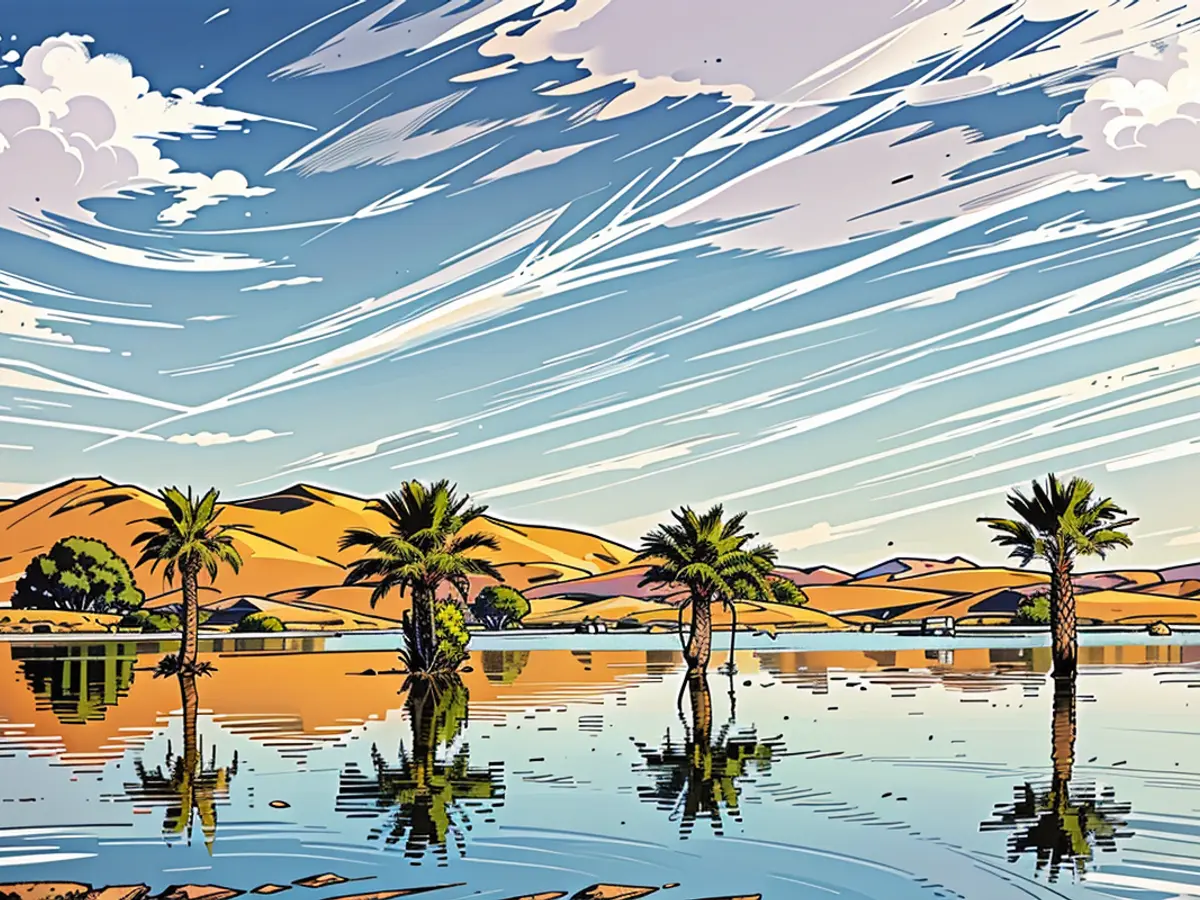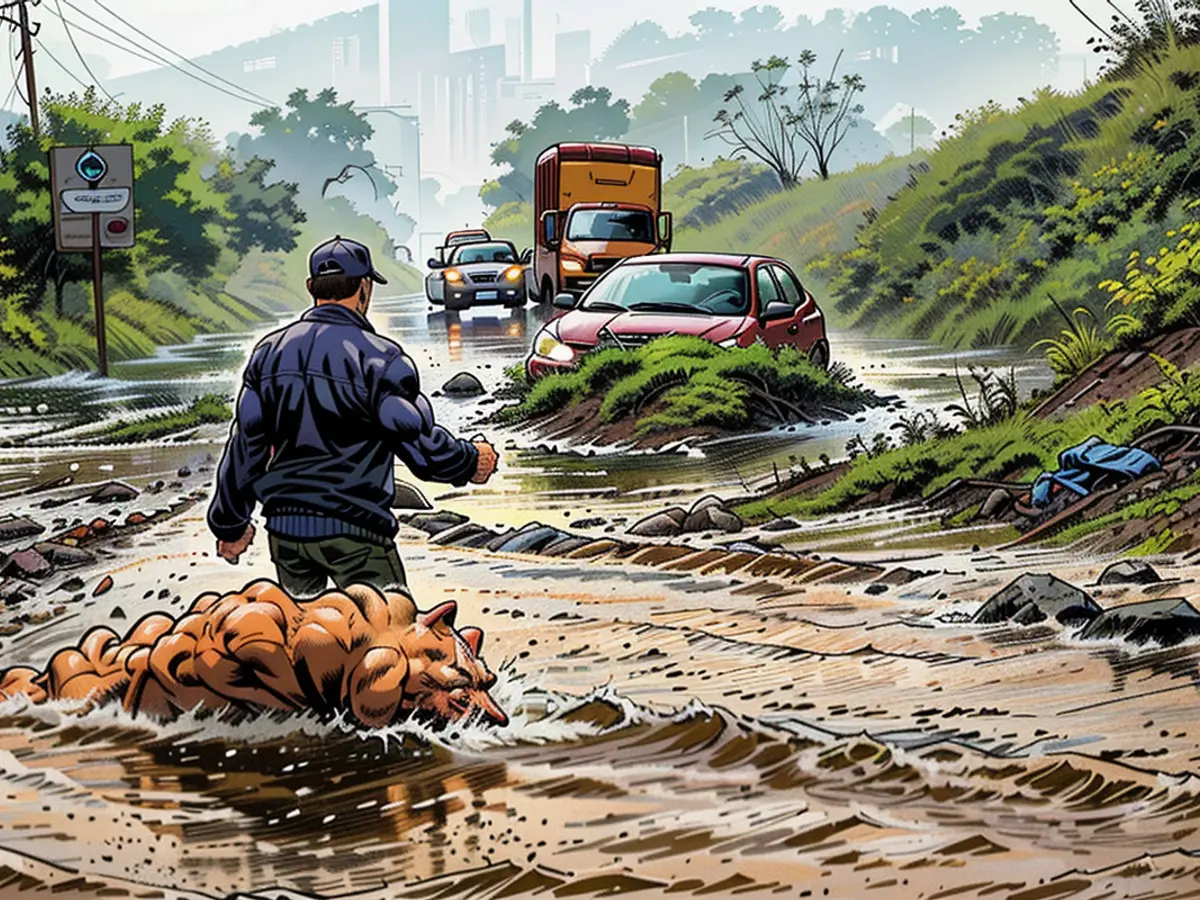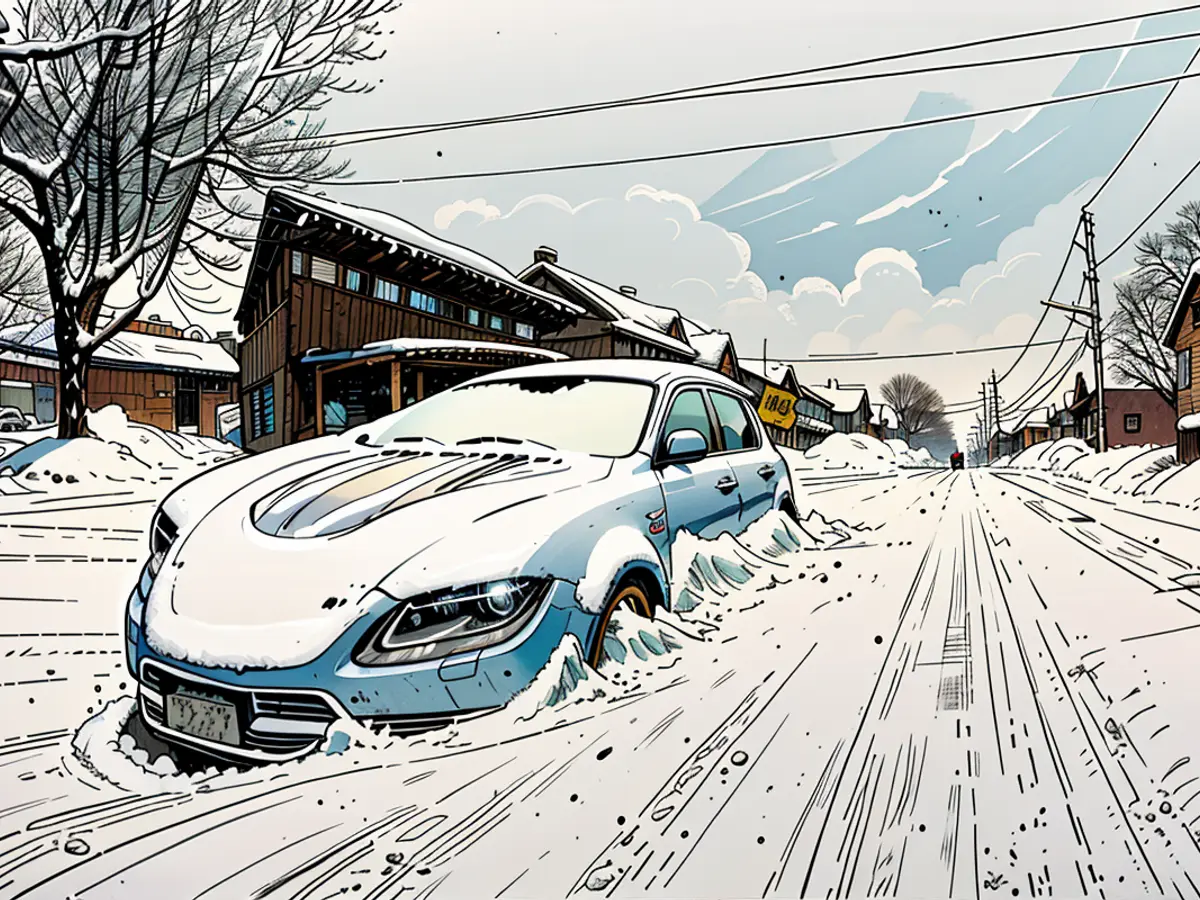Unique visuals display uncommon flooding incidents in Earth's largest arid desert.
(News Outlet) — Impressive visuals emerging from the Sahara Desert show expansive lakes carved into swaying sand dunes, a result of the desert's first significant rainfall in decades.
Although the Sahara occasionally experiences rainfall, typically around 2-3 inches annually, and mostly during autumn, an unusual two-day rain event occurred in September, predominantly in southeast Morocco. This was instigated by a low-pressure system that moved across the northwestern Sahara.
Preliminary data from NASA satellites indicated up to 7.9 inches of rain in certain regions.
The city of Errachidia, located in southeast Morocco, recorded approximately 2.8 inches of rainfall, principally over a two-day period late in September. This echoes four times the average precipitation for the entire month of September and surpasses half a year's worth for this particular region.
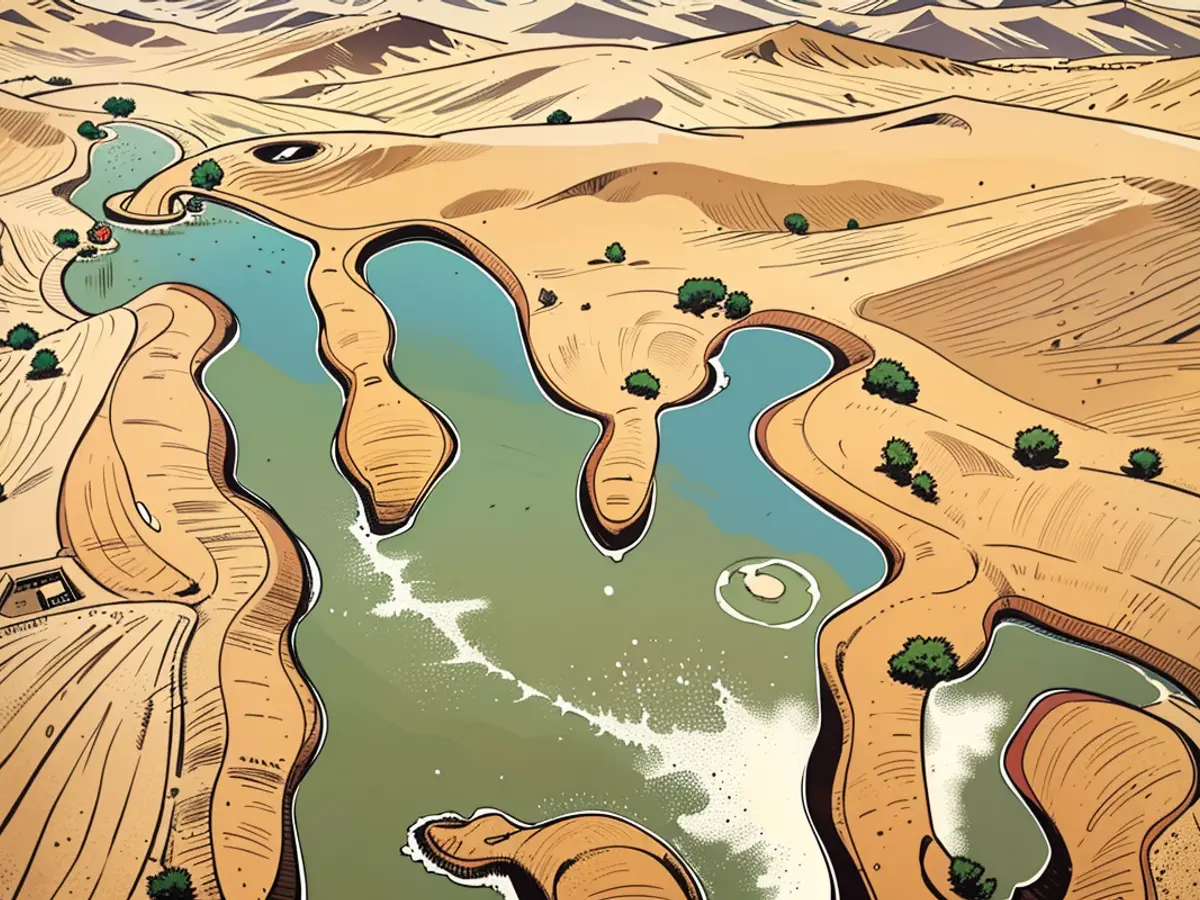
Houssine Youabeb from Morocco's meteorology agency told AP that such heavy rainfall in such a short time frame has not been seen in at least 30 to 50 years.
The rainwater flowing across the desert landscape transformed this formerly barren environment into a vibrant ecosystem.
Among the most striking images arise from the desert town of Merzouga, where the unusual downpour carved fresh lakes into the sprawling sand dunes.
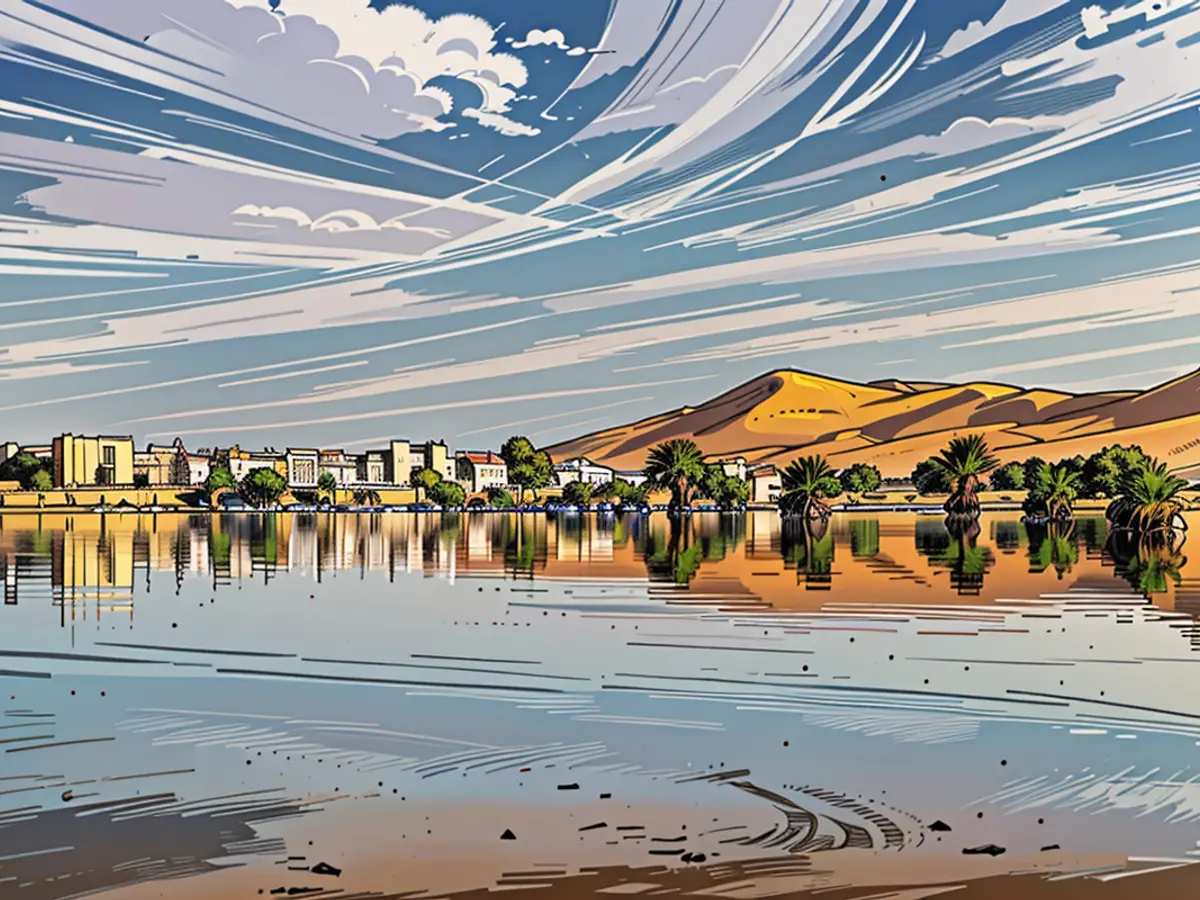
Now, the reflections of the town's palm trees dance across the vast new lagoon, their brilliance accentuated by the towering sand dunes' shadows.
Additionally, lakes that typically remain dry, like the one in Iriqui National Park (Morocco's largest national park), were filled with water. NASA satellite images highlighting the area in false color depict new lakes appearing over expanses of the northwest Sahara.
Although the majority of the precipitation fell on sparsely inhabited regions, some affected Morocco's urban zones, resulting in destructive flooding that took over a dozen lives last month.

The Sahara, the world's largest non-polar desert, covers 3.6 million square miles. Rainfall patterns and location observable in satellite images from September suggested that in spite of minimal population impact, those areas appeared greener than ever. Researchers attribute this unusual phenomenon to the northern movement of storms, some studies associating this phenomenon with human-induced climate change.
Additionally, this study suggests the likelihood of more intense rainfall occurrences in the Sahara in the future, as the planet's temperature continues to rise due to fossil fuel pollution, potentially altering the rain cycle.
(News Outlet's Brandon Miller contributed to this report.)

A NASA false-color satellite image shows parts of the Sahara Desert in Morocco and Algeria on August 14, 2024. The second image shows the same area on September 10, 2024 with the lake in Iriqui National Park shown in the dark blue at the bottom left.
The unusual rainfall in September transformed the Sahara Desert, making areas that usually appear dry look notably greener than ever. This weather event also resulted in the formation of expansive lakes within the sand dunes, as seen in Merzouga and Iriqui National Park.
Researchers believe that the northern movement of storms and potential link with human-induced climate change may contribute to more intense rainfall occurrences in the Sahara in the future, potentially altering the rain cycle.
